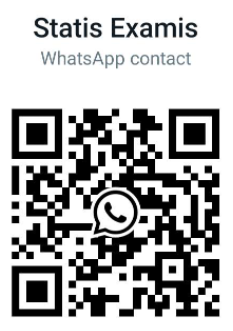Navigation » List of Schools » California State University, Northridge » Sociology » Soc 348 – Juvenile Delinquency » Fall 2022 » Quiz 2
Question #1
A The general theory of crime
B Social control theory
C Radical criminology
D Cultural deviance theory
Question #2
A opportunities to engage in political and social activism
B enhanced prestige or status
C monetary profits from drugs
D excitement
Question #3
A amphetamines
B cocaine
C methamphetamines
D heroin
Question #4
A blood-in
B blessed-in
C coerced-in
D jumped-it
Question #5
A Project Alert
B Life Skills Training
C Project Toward No Drug Abuse
D the war on drugs
Question #6
A Female gang members never participate in violent crimes.
B Female gangs are generally not violent in nature.
C Female gang members are not involved in the planning of gang activities.
D Girls receive no emotional fulfillment from their involvement in gang activity.
Question #7
A the recruitment and retention of parents
B recruiting volunteers to train parents
C finding places to train parents
D cost of implementation
Question #8
A cause injury to themselves to steal drugs from medical facilities
B reach a turning point and stop using drugs
C commit crimes to maintain their drug supply
D raid their parent’s drug supplies
Question #9
A underclass theory
B subcultural affiliation
C strain theory
D social disorganization theory
Question #10
A parental attachment
B oppressiveness
C delinquency
D submissiveness
Question #11
A influential type
B vertical type
C commission type
D horizontal type
Question #12
A gang migration
B role expectations and sanctions
C gang intimidation
D leadership
Question #13
A impact of racism, sexism, poverty, and limited opportunity structures
B personality variables and problems associated with homosexual behavior
C relations with parents and problems associated with heterosexual behavior
D personality variables, relations with spouses, and unlimited opportunities
Question #14
A drift theory
B culture theory
C blocked opportunity theory
D labeling theory
Question #15
A Project toward No Drug Abuse (Project TND)
B Life Skills Training (LST)
C Promoting Alternative Thinking Strategies (PATHS)
D Multisystemic Therapy (MST)
Question #16
A high-risk juveniles who commit violent acts.
B high-risk juveniles who commit property crimes.
C high-risk juveniles who have not committed crime
D low-risk juveniles who have not committed crime
Question #17
A no one solution exists to the delinquency prevention problem
B each community requires a package of services that involve community-wide planning
C the timing of interventions is critical in achieving a successful outcome
D high-risk behaviors are independent, so prevention programs should have narrow and specific goals.
Question #18
A Gang delinquency represents a subcultural and collective solution to the problem faced by lower-class boys.
B Lower-class boys interact with and gain support from other alienated individuals.
C Joining a gang is part of the experience male adolescents need to grow up to adulthood.
D Violent delinquent gangs arise out of conditions that encourage the development of a sociopathic personality in adolescents.
Question #19
A Education must be oriented toward the entire group rather than an individual.
B Good teaching is one of the first lines of defense against misbehavior.
C Tracking systems should be used when and where possible.
D Schools must stick to fixed hour schedules.
Question #20
A Drug courts
B Harm reduction
C Prevention programs
D War on drugs
Question #21
A stable family life
B stories of victimization
C mental health and substance abuse problems
D school failure
Question #22
A provide youth with adequate supervision and support
B aim to fix the psychological issues contributing to delinquency.
C address key areas of risk in youth’s lives
D offer youth a long-term stay in the community
Question #23
A There is hardly any relationship between neglect and abuse.
B Most child abusers were brought up in a disciplined family environment.
C Those abused in childhood will turn away from child abuse.
D Those abused in childhood will turn abusers.
Question #24
A perinatal difficulties
B poor family management practices
C academic failure
D living in an affluent neighborhood
Question #25
A There is sufficient evidence to support the allegation of maltreatment.
B Maltreatment or the risk of maltreatment appears to be present.
C Parents should be prosecuted in criminal court.
D There is insufficient evidence to support maltreatment.
Question #26
A labeling theory
B social control theory
C conflict theory
D cultural deviance theory
Question #27
A stress relief theory
B social development model
C social disorganization theory
D addictive personality theory
Question #28
A social learning theory
B interactionist theory of delinquency
C feminist theory of delinquency
D power-control theory
Question #29
A Life Skills Training (LST)
B Chicago Area Project
C Functional Family Therapy (FFT)
D Positive Youth Development
Question #30
A social control theory
B strain theory
C cultural deviance theory
D radical theory
Question #31
A Girls involved in criminal activity are rarely the victims of sexual abuse.
B Victimizers utilize official agencies to keep victims vulnerable.
C As girls run away from home, they become involved in various forms of crime.
D On streets, girls get involved in criminal activities that exploit their sexuality.
Question #32
A reduce the shame
B leave the home environment
C increase their livelihood
D take control of others by making them pay
Question #33
A labeling theory
B power-control theory
C interactionist theory
D differential association theory
Question #34
A stress relief
B social disorganization
C social control
D addictive personality
Question #35
A parent/community involvement
B supportive, personalized, and relevant learning
C curriculum independent of learning expectations
D monitoring, accountability, and assessment
Question #36
A High school girls are obsessed with achievement.
B High school girls are obsessed with physical appearance.
C High school girls have intense mother-daughter patterns of communication.
D High school girls are obsessed with popularity based on external characteristics.
Question #37
A Low SES and abusive parents
B Broken homes and abusive parents
C Substance abuse and history of violence
D Gang involvement and gun ownership
Question #38
A children who were reported by educational personnel
B children reported to be victims of sexual abuse
C children with a disciplined family background
D children with allegations of multiple types of maltreatment
Question #39
A training schools
B violence prevention programs
C tertiary prevention programs
D juvenile aftercare
Question #40
A ingested
B injected
C absorbed
D inhaled
Question #41
A School authorities do not have the right to deny free speech unless it interferes with school operations.
B A student’s right to style his or her hair is protected under the right to privacy.
C Students could not be compelled to salute the flag if it violates their religious rights.
D Due process requires a student to receive notice and opportunity for a hearing.
Question #42
A labeling theory
B strain theory
C cultural deviance theory
D conflict theory
Question #43
A truancy
B violence
C substance abuse
D gangs
Question #44
A White
B Asian
C Hispanic
D African American
Question #45
A mother
B brother
C sister
D father/stepfather
Question #46
A juveniles independent of gang affiliations
B adult suppliers independent of gang affiliations
C adult gang members
D juvenile male gang members
Question #47
A steal bicycles
B steal guns from stores
C deal cocaine out of cramped “rock houses”
D recruit females
Question #48
A They do not reveal differences in the adjustment and development.
B They are more likely to be gay than children with heterosexual parents.
C They show conspicuous differences in their male and female behaviors (gender role behavior).
D They are more likely to be sexually abused.
Question #49
A shifting
B migration
C transporting
D moving
Question #50
A Project Northland
B Outward Bound
C the Step Up Program
D Yale Child Welfare Project
Question #51
A masculinity hypothesis
B gendered pathway
C sex-role socialization
D intellectual deficit
Question #52
A attention deficit disorder
B matriarchal family relations
C late pubertal maturation
D intellectual accomplishments
Question #53
A Interventions are not one-time efforts.
B One size fits all.
C Surveillance is a double-edged sword.
D The earlier the intervention, the better.
Question #54
A inadequate parents
B status deprivation
C lenient rules
D incompetent teachers
Question #55
A Marijuana
B Heroin
C Crank
D Ecstasy
Question #56
A Adolescent Transitions Program
B Multisystemic Therapy
C Functional Family Therapy
D Strengthening Families Program
Question #57
A strip-searched in the presence of male officers
B placement in isolation for trivial reasons
C inappropriate touching, pushing, and hitting by staff
D withholding of food
Question #58
A regulars
B peripherals
C veterans
D associates
Question #59
A poor parental performance
B academic incompetence
C dislike of school
D rejection of school’s authority




